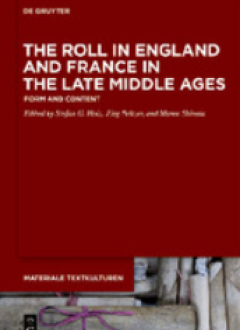Ditapis dengan
E-book Animals and the Shaping of Modern Medicine : One Health and its Histories
This volume breaks new ground in applying Benson’s second per-spective to medical history: ‘to explore the history of nonhuman ani-mals as subjects in their own right and for their own sakes’.5 Humans remain important, of course, for ultimately we can only know about animals from the records that humans have created, and which reflect …
- Edisi
- -
- ISBN/ISSN
- 9783319643373
- Deskripsi Fisik
- 290 hlm
- Judul Seri
- -
- No. Panggil
- 902 WOO a
E-book Banking on Milk : An Ethnography of Donor Human Milk Relations
Donor human milk banks are expanding around the world at an exponential rate, which is directly linked to global increases in premature births. The importance of human milk for prematurely born infants has been extensively identified, even among the recent social scientific work that has questioned the efficacy of human milk and health considerations. In addition, research also shows that a sig…
- Edisi
- -
- ISBN/ISSN
- 9780203713051
- Deskripsi Fisik
- 147 hlm
- Judul Seri
- -
- No. Panggil
- 610.73 CAS b

E-book The Roll in England and France in the Late Middle Ages
f a poll were carried out to establish which form of manuscript, the codex or the roll, the public associated more with the Middle Ages, the result would probably see the codex taking most votes. A monk handling a codex is a stereotypical image of and for the Middle Ages promoted by medieval evidence as much as by modern movie productions such as the film adaptation…
- Edisi
- -
- ISBN/ISSN
- 9783110645200
- Deskripsi Fisik
- 339 hlm
- Judul Seri
- -
- No. Panggil
- 936 CAS t
E-book Oxford Handbook of Oncology
Welcome to the 4th edition of this handbook. Over the previous editions, we have tried to evolve the content and style to make the book more accessible and useful to our readers. This has continued in edition four with alterations, in response to reader feedback and as a result of new data emerging in many cancer fields. Oncology has continued to produce novel diagnostics, treatment strategies,…
- Edisi
- 4th ed.
- ISBN/ISSN
- 9781099689842
- Deskripsi Fisik
- 897 hlm
- Judul Seri
- -
- No. Panggil
- 616.99 CUL o
E-book Icon on Ice : International Trade and Management of Polar Bears
Polar bears are a charismatic Arctic species and the anticipated effects of climate change on their habitat have gained increasing international attention, making the species a high-profile conservation priority. Changes to the Arctic ecosystem will not only affect polar bears and their habitat, but also the livelihoods of Arctic communities. Hunting polar bears helps maintain cultural identit…
- Edisi
- -
- ISBN/ISSN
- 9780969373063
- Deskripsi Fisik
- 182 hlm
- Judul Seri
- -
- No. Panggil
- 599.7 SHA i
 Karya Umum
Karya Umum  Filsafat
Filsafat  Agama
Agama  Ilmu-ilmu Sosial
Ilmu-ilmu Sosial  Bahasa
Bahasa  Ilmu-ilmu Murni
Ilmu-ilmu Murni  Ilmu-ilmu Terapan
Ilmu-ilmu Terapan  Kesenian, Hiburan, dan Olahraga
Kesenian, Hiburan, dan Olahraga  Kesusastraan
Kesusastraan  Geografi dan Sejarah
Geografi dan Sejarah